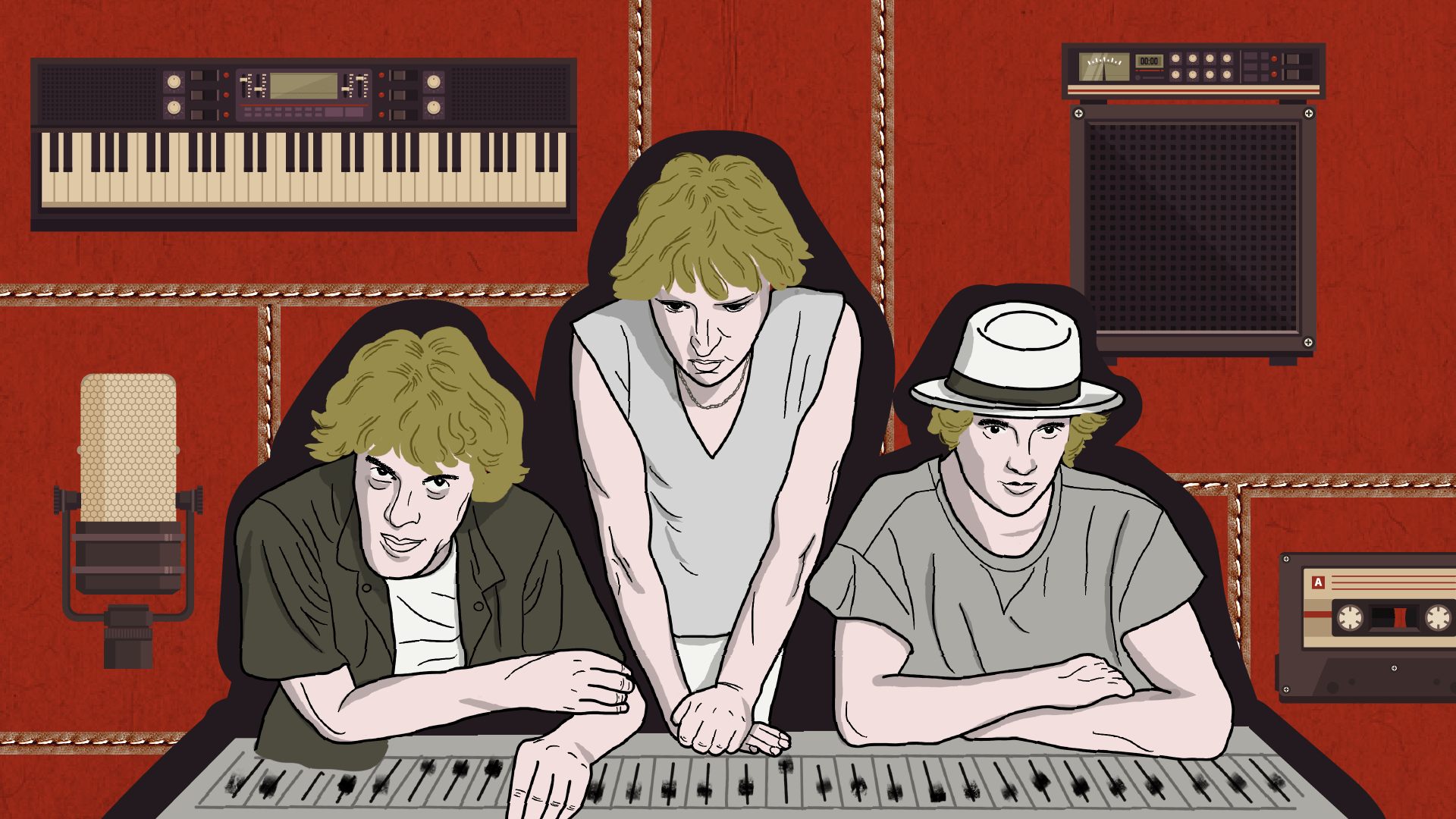We’ve all heard of the iconic stories from major artists’ performances, like Michael Jackson’s first moonwalk on stage, Jimi Hendrix lighting his guitar on fire, Keith Moon exploding his drums, Pete Townsend memorably smashing his guitar… All of these events are well-documented and known by the general public, but not many people are aware of the captivating stories that unfolded in the studio while these artists were making their biggest hits!
Mistakes that were kept in the song
When studio recordings were done using tape machines, mistakes made by performers had to be literally spliced out from the tape with a razor blade and then re-assembled in order to leave gaps in the music. This process often led to small errors being overlooked and kept in the recording, since digital audio workstations weren’t born yet. These little mistakes would end up making a mark on these hits, as the songs would not be the same without these mishaps.
Here are examples of popular artists keeping those little accidental moments that made the songs what they are today.
“Roxanne” – The Police
While the Police were recording one of their first hit songs “Roxanne”, band frontman Sting sat on an upright piano while the tape was rolling. He mentions forgetting about the lid of the piano not being closed and playing a chord with his behind right in the beginning of the track.
“Hey Jude” – Beatles
Another famously audible example is Sir Paul McCartney expressing his anger while playing the wrong chord in a very popular Beatles song – “Hey Jude”. At the 2:57 mark in the remastered version on any streaming platform, you can hear the Beatle drop an F-bomb due to the small mistake he had made. Listen and try to spot it!
“Just What I needed” – The Cars
In one of their biggest hits “Just What I Needed”, The Cars blend in a pretty big flub by their drummer, David Robinson, and make it sound intentional. In the song’s last verse, the drum beat goes from a regular “kick-snare, kick-snare” to a “snare-kick, snare-kick” groove, which was not intentional according to the band’s drummer. Though that might have been a mistake, it works perfectly, since the lyrics in that verse start off with “Cause when you’re standing oh so near, I kind of lose my mind”. Unintentionally, the shifted drum groove brings an extra meaning to the lyrics – confusing the listeners for a brief moment, almost making them lose their minds.
Moments when the producer elevated the song
Artists are usually in control of what sound they want out of their original material, but quite often their producers and engineers will step in with suggestions that the artists dislike but ultimately end up making the song what it is.
“Don’t Stop ‘Till You Get Enough” – Michael Jackson
In 1979, when Michael Jackson was recording “Don’t Stop ‘Till You Get Enough”, a prominent string section sound was bothering him in the introduction and interludes of the song. He demanded to remove them as they were distracting him from recording his vocals properly. All strings were going to be removed until legendary producer Quincy Jones stepped in and told Michael they were keeping that string section in the song no matter what. Without Quincy, the song would not be the hit it is today, had that massive orchestra section been removed.
“Strawberry Fields Forever” – Beatles
Often referred to as the fifth Beatle, George Martin, the band’s producer, would experiment with tape replay speeds and tape loops to get a unique sound. When John Lennon expressed dissatisfaction about the sound of “Strawberry Fields Forever”, Martin came in with a few tricks up his sleeve.
The original layout of the song was recorded with a full band, and John Lennon’s layout was recorded with a full orchestra, accurately representing his artistic vision for the track. Instead of choosing between the two, George Martin slowed down one version to match the pitch of the other and blended them together. The final recording of the song creates a psychedelic, dreamy sound.
The Joshua Tree – U2
In the late 80s, the Irish band U2 was recording what would become one of their biggest albums – and one of the decade’s defining records. Their producer, Brian Eno, was known for his atmospheric textures and reverb-soaked soundscapes, which significantly helped U2 shape their sound as a band. Eno introduced innovative recording and production techniques, such as using unconventional instruments and sound manipulation. He pushed the band to take creative risks and explore new musical directions, leading to a more unique and dynamic sound. A notable example of Eno’s influence is U2’s guitarist The Edge’s distinctive guitar tone.
Impromptu collaborations
Some of the best music collaborations in history were last minute and unplanned, like when various major artists happened to be recording in the same building, at the same time.
“Under Pressure” – Queen & David Bowie
Queen were working on their 1982 album Hot Space at Mountain Studios in Montreux, Switzerland. While at the studio, the band bumped into David Bowie, who also happened to be working on an album at the same location. Queen had been working on a song called “Feel Like” that they weren’t entirely satisfied with. They all started jamming on the song’s chords, wrote new lyrics, and the rest is history, as they say. That jam between Bowie and Queen became the iconic “Under Pressure”.
“You’re So Vain” – Carly Simon
While no official credit has been given to artists other than Carly Simon for her early 70s massive hit, one famous voice can be heard doing backup vocals in some parts of the song. In the chorus, Mick Jagger of the Rolling Stones can be heard singing the lines: “I bet you think this song is about you, don’t you, don’t you, don’t you”. Jagger had phoned the studio Carly Simon was recording to see what had been going on over there. Simon answered the phone and said “We’re doing some backup vocals on a song of mine, why don’t you come down and sing with us?”
While we know a lot about what happens on stage, it’s always fascinating to peek behind the curtain and learn about the stories of how a legendary piece of music was made. Understanding the context of a recording session can offer listeners a new perspective, and maybe even alter how they interpret the song.
Written by Liam Clarke
Illustration by Holly Li





















